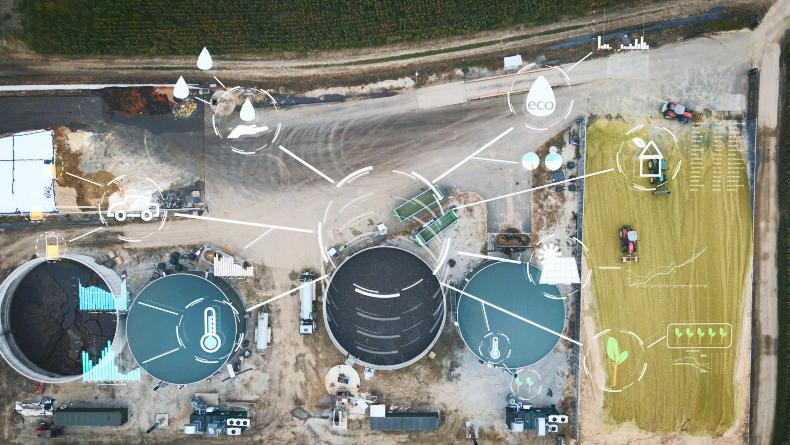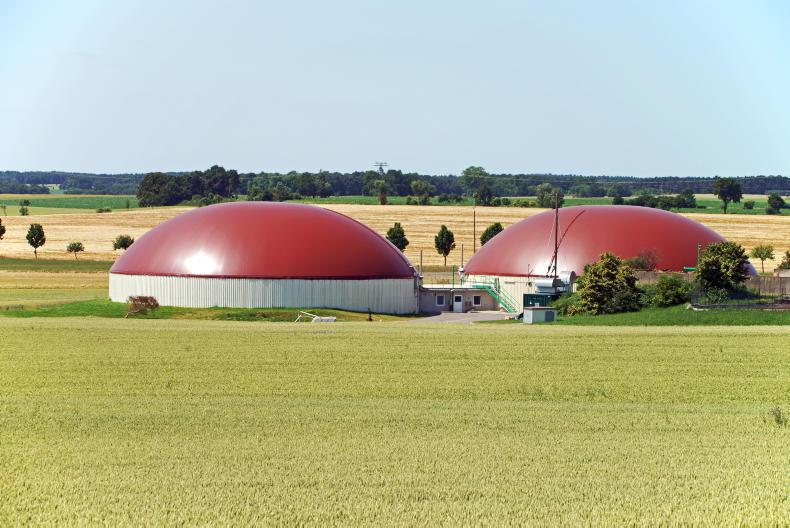The recently launched Climate Action Plan 2023 acknowledges afforestation as “one of the largest land-based, long-term climate change mitigation measures available to Ireland”.
The plan outlines how Ireland can halve “greenhouse gas emissions by the end of the decade” and become “carbon-neutral by 2050”.
While the 2023 plan is similar to previous iterations, there are changes in emphasis, especially when comparisons are drawn with the first 2019 plan.
The initial plan cautioned about the low levels of average annual afforestation rates in Ireland at the time, which were 5,500ha.
“This is below the target rate and at these rates, Ireland will not achieve its 18% [forest] land cover target by 2046,” it warned.
Four years on, the 2023 plan makes no mention of the 18% target by 2046 in helping Ireland achieve net zero by mid-century. The insufficient 5,500ha annual planting programme in 2019 has now fallen to 2,300ha.
Afforestation
The current plan relies on increased afforestation based on attractive financial incentives in the new Forestry Programme (2023-2027). The aim is to achieve an 8,000ha afforestation programme that will “incentivise an increase to the area of afforestation by 68,000ha” by 2030.
While the overall plan keeps the focus on carbon neutrality by 2050, forestry’s input stops at 2030.
In this regard, it ignores two major reports carried out during 2022 on the rate of afforestation required to achieve net zero. In the paper, The Economics of Afforestation and Management in Ireland: Future Prospects and Plans, Prof Cathal O’Donoghue, University of Galway, maintained: “The area of new forestry required to achieve carbon neutrality by 2050 is 18,000ha per annum.”
COFORD, the advisory body to the Department of Agriculture, Food and the Marine, recommended 16,000ha.
“Analysis suggests that there is an ample land base available in Ireland to approach a forest cover of 18% by mid century,” the COFORD report claimed.
Building in wood
While the 8,000ha annual planting target in the 2023 plan falls well short of these proposals, at least it is a target. A major disappointment is the lack of any targets in decarbonising the economy, especially construction, where wood has a major role to play.
According to the Irish Green Building Council (IGBC), construction and the operation of the built environment accounts for 38% of Ireland’s emissions.
While this is similar to global construction emissions, European countries in particular are taking steps to decarbonise construction not only in timber frame buildings but in medium- to high-rise mass wood buildings. Build-in-Wood, the EU-funded Horizon 2020 project, has a goal of drastically increasing the proportion of timber buildings.
Unlike Ireland, EU countries are setting targets for timber construction. The French government, for example, has announced plans for a sustainability law that ensures all public buildings are built from at least 50% timber or other natural materials.
Compared with European countries, which build 85% of their houses in timber frame, Ireland has a high reliance on fossil-based materials in construction.
Unlike countries such as Denmark and Sweden, the plan makes no reference to wood biomass as a renewable energy source
“Timber-framed buildings are increasingly common in Ireland making up approximately 25% of the Irish market,” the plan states.
It has no future target for timber-frame construction in Ireland even though Forest Industries Ireland has outlined how 70% is achievable, which Scotland has surpassed.
The plan does, however, highlight modern methods of construction (MMC), which have “the potential to dramatically improve construction sector productivity, innovation, speed of delivery, sustainability and ultimately, costs”.
It acknowledges that “support is required to further increase the market share for timber construction and to displace the demand for cement in the construction sector”.
It cites sustainable building initiatives, such as Ireland’s National Construction Technology Centre, while The Department of Further and Higher Education, Research, Innovation and Science is “leading on the establishment of a MMC Demonstration Park at Mount Lucas, to showcase the latest innovations in residential construction technology”.
Unlike countries such as Denmark and Sweden, the plan makes no reference to wood biomass as a renewable energy source.
State and private forestry 2023 to 2050
One of the main changes in the Climate Action Plan, compared with previous plans, is the strong showing by Coillte. Mentioned only once in the 2019 and 2021 plans, it features 11 times in the current plan, mainly in relation to its strategic vision. A key element in Coillte’s strategic plan is to establish 100,000ha of new forests by 2050 in collaboration with institutional investors.
Based on a 50:50 native-conifer species mix, a programme of this scale would receive approximately €2bn of State funding at current rates.
While the IFA and a number of politicians have expressed serious misgivings about this initiative, these are not shared by the Climate Action Plan authors.
They say the climate plan will: “Develop, assess and adopt as appropriate Coillte’s strategic vision, which aims to capture additional carbon dioxide in its forests, soils and wood products by 2050.”
This contrasts with long-term expectations from private forestry, which is not mentioned once in relation to 2050 targets.
The 18% forest cover target by mid-century has been dropped, which must place the net zero aim of the overall plan in serious doubt. In addition, no effort is made to measure tangible performance since the first plan in 2019.
Long-term vision
A long-term vision is now required to inform the next Climate Action Plan.
This needs informed input from an independent forestry development agency representing all stakeholders in the Irish forestry and forest products sector, especially farmers, forestry companies, foresters, contractors and nurseries charged with delivering 18% forest cover by mid century, assuming that is still the target.
The recently launched Climate Action Plan 2023 acknowledges afforestation as “one of the largest land-based, long-term climate change mitigation measures available to Ireland”.
The plan outlines how Ireland can halve “greenhouse gas emissions by the end of the decade” and become “carbon-neutral by 2050”.
While the 2023 plan is similar to previous iterations, there are changes in emphasis, especially when comparisons are drawn with the first 2019 plan.
The initial plan cautioned about the low levels of average annual afforestation rates in Ireland at the time, which were 5,500ha.
“This is below the target rate and at these rates, Ireland will not achieve its 18% [forest] land cover target by 2046,” it warned.
Four years on, the 2023 plan makes no mention of the 18% target by 2046 in helping Ireland achieve net zero by mid-century. The insufficient 5,500ha annual planting programme in 2019 has now fallen to 2,300ha.
Afforestation
The current plan relies on increased afforestation based on attractive financial incentives in the new Forestry Programme (2023-2027). The aim is to achieve an 8,000ha afforestation programme that will “incentivise an increase to the area of afforestation by 68,000ha” by 2030.
While the overall plan keeps the focus on carbon neutrality by 2050, forestry’s input stops at 2030.
In this regard, it ignores two major reports carried out during 2022 on the rate of afforestation required to achieve net zero. In the paper, The Economics of Afforestation and Management in Ireland: Future Prospects and Plans, Prof Cathal O’Donoghue, University of Galway, maintained: “The area of new forestry required to achieve carbon neutrality by 2050 is 18,000ha per annum.”
COFORD, the advisory body to the Department of Agriculture, Food and the Marine, recommended 16,000ha.
“Analysis suggests that there is an ample land base available in Ireland to approach a forest cover of 18% by mid century,” the COFORD report claimed.
Building in wood
While the 8,000ha annual planting target in the 2023 plan falls well short of these proposals, at least it is a target. A major disappointment is the lack of any targets in decarbonising the economy, especially construction, where wood has a major role to play.
According to the Irish Green Building Council (IGBC), construction and the operation of the built environment accounts for 38% of Ireland’s emissions.
While this is similar to global construction emissions, European countries in particular are taking steps to decarbonise construction not only in timber frame buildings but in medium- to high-rise mass wood buildings. Build-in-Wood, the EU-funded Horizon 2020 project, has a goal of drastically increasing the proportion of timber buildings.
Unlike Ireland, EU countries are setting targets for timber construction. The French government, for example, has announced plans for a sustainability law that ensures all public buildings are built from at least 50% timber or other natural materials.
Compared with European countries, which build 85% of their houses in timber frame, Ireland has a high reliance on fossil-based materials in construction.
Unlike countries such as Denmark and Sweden, the plan makes no reference to wood biomass as a renewable energy source
“Timber-framed buildings are increasingly common in Ireland making up approximately 25% of the Irish market,” the plan states.
It has no future target for timber-frame construction in Ireland even though Forest Industries Ireland has outlined how 70% is achievable, which Scotland has surpassed.
The plan does, however, highlight modern methods of construction (MMC), which have “the potential to dramatically improve construction sector productivity, innovation, speed of delivery, sustainability and ultimately, costs”.
It acknowledges that “support is required to further increase the market share for timber construction and to displace the demand for cement in the construction sector”.
It cites sustainable building initiatives, such as Ireland’s National Construction Technology Centre, while The Department of Further and Higher Education, Research, Innovation and Science is “leading on the establishment of a MMC Demonstration Park at Mount Lucas, to showcase the latest innovations in residential construction technology”.
Unlike countries such as Denmark and Sweden, the plan makes no reference to wood biomass as a renewable energy source.
State and private forestry 2023 to 2050
One of the main changes in the Climate Action Plan, compared with previous plans, is the strong showing by Coillte. Mentioned only once in the 2019 and 2021 plans, it features 11 times in the current plan, mainly in relation to its strategic vision. A key element in Coillte’s strategic plan is to establish 100,000ha of new forests by 2050 in collaboration with institutional investors.
Based on a 50:50 native-conifer species mix, a programme of this scale would receive approximately €2bn of State funding at current rates.
While the IFA and a number of politicians have expressed serious misgivings about this initiative, these are not shared by the Climate Action Plan authors.
They say the climate plan will: “Develop, assess and adopt as appropriate Coillte’s strategic vision, which aims to capture additional carbon dioxide in its forests, soils and wood products by 2050.”
This contrasts with long-term expectations from private forestry, which is not mentioned once in relation to 2050 targets.
The 18% forest cover target by mid-century has been dropped, which must place the net zero aim of the overall plan in serious doubt. In addition, no effort is made to measure tangible performance since the first plan in 2019.
Long-term vision
A long-term vision is now required to inform the next Climate Action Plan.
This needs informed input from an independent forestry development agency representing all stakeholders in the Irish forestry and forest products sector, especially farmers, forestry companies, foresters, contractors and nurseries charged with delivering 18% forest cover by mid century, assuming that is still the target.










SHARING OPTIONS